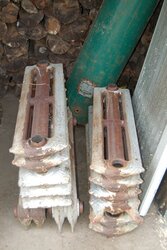- May 16, 2007
- 7
My home was built in 1973 and has baseboard water heat. The person who built the house installed a radiator in the fireplace, which ties into the rest of the heating system. The idea being you could heat the whole house with the fireplace. But the idea works much better in theory than in practice. If the fire gets too hot, it creates too much pressure in the system and it has to relieve itself by spewing water out the back of the boiler. I would like to take advantage of a high efficiency insert but need to remove the radiator in order to have at least the 6 inch space needed for the chimney lining. The radiator seems to be built directly into the chimney, about a couple of feet above the flue, and there does not appear to be access to it other than through the fireplace. Has anyone every heard of such a set up? Does anyone have any experience removing a radiator like this or have any suggestions on how to remove it? Thanks!


